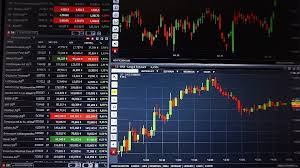- Monday October 27th, 2025
- traiding1
The Ultimate Guide to Forex Trading Hours 1576663391

Understanding Forex Trading Hours
Forex trading hours are crucial for traders around the globe. Understanding the best times to trade can significantly impact your overall trading strategy and success. In this article, we will delve deep into the Forex trading hours, examine how they correspond to different market sessions, and provide insights on optimal trading times. For those looking to enhance their trading experience, consider checking out forex trading hours Top Forex Brokers for expert insights and brokerage options.
Market Hours Overview
The Forex market operates 24 hours a day during the business week, which is uniquely different from stock markets that have fixed opening and closing times. The Forex market is open from Sunday evening to Friday evening, with three main trading sessions: the Asian, European, and North American sessions. Each session has its unique characteristics, driven by market participants, and different levels of volatility.
Asian Session
The Asian trading session starts at 11 PM GMT and closes at 8 AM GMT. This session is generally considered to be quieter compared to other sessions. Major currency pairs traded during this time include AUD/USD and USD/JPY. The lower volatility can present both opportunities and risks; while it might not provide ample trading signals, it can be perfect for traders looking to implement a range trading strategy or for new traders to practice without much noise from the market.

European Session
The European session is the most active time in the Forex market, beginning at 7 AM GMT and closing at 4 PM GMT. During this period, a significant overlap occurs with the Asian session in the early trading hours and with the North American session toward the latter part of the day. Major European financial centers like London, Frankfurt, and Paris are located within this session, contributing to its high liquidity and volatility. Traders often prefer this session for its active market movements.
North American Session
The North American session starts at 12 PM GMT and ends at 9 PM GMT. It is heavily influenced by the US market, especially with the release of economic data from the United States. This session sees a lot of activity from traders looking to react to news events, resulting in spikes of volatility and trading opportunities. Currency pairs such as USD/CAD and EUR/USD are often actively traded during this time.
Understanding Market Overlaps
The overlaps between trading sessions are critical times for traders. For example, the overlap between the Asian and European sessions occurs from 7 AM to 8 AM GMT, and the overlap between the European and North American sessions is from 12 PM to 4 PM GMT. These overlaps often see increased volatility and trading volume, making them prime times for scalpers and day traders to capitalize on price movements.
How Trading Hours Affect Volatility

Different trading hours come with varying degrees of volatility. Understanding this can help traders position their trades better. The highest volatility usually occurs when the European market opens and overlaps with the Asian session, as well as during the North American session overlap. Low volatility periods may not provide enough movement for scalpers, while they may be beneficial for long-term traders looking for stable price actions.
Best Times to Trade
While the Forex market is open 24 hours a day, it does not mean that all hours are equally effective for trading. Traders typically find the best times to be during the overlaps of the major sessions due to increased trading volumes. For day traders, the peak times are often between 12 PM and 4 PM GMT, allowing for maximum interaction with the market.
Tips for Trading During Different Sessions
- Stay Informed: Keep an eye on economic calendars and news releases that may impact volatility during each session.
- Adjust Your Strategies: Adapt your trading strategies based on the volatility of the session you’re trading in.
- Use Stop Losses: Always protect your trades, especially in high-volatility situations.
- Practice Patience: Wait for the right opportunities rather than forcing trades during quieter times.
- Evaluate Your Performance: Analyze your trading results based on your activities in different trading hours to fine-tune your strategies.
Conclusion
Understanding the Forex trading hours and how they affect market conditions is crucial for every trader. By aligning your trading strategy with the most viable trading times, you can better position yourself to take advantage of price movements and manage risk effectively. Whether you’re a seasoned trader or just starting, recognizing the influence of market hours on trading will undoubtedly enhance your overall trading performance. Always stay informed and flexible to adjust your strategies as market conditions change.
